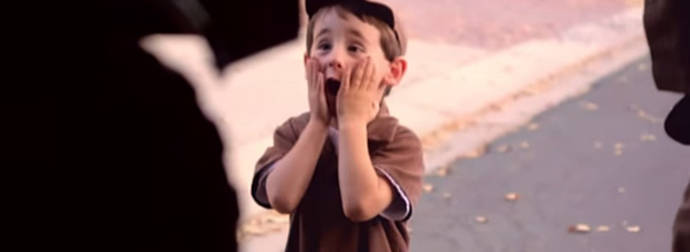Thanks to cell phones, phone booths are becoming more and more obsolete. Some may lament their passing, but time, and technology, continue to march steadily on, usually to everyone’s benefit. Phone booths, once commonplace structures, have been removed from many cities, or, in some cases, repurposed for other uses, such as being used as tiny public libraries in some towns in the U.K.
The classic red phone box of Great Britain is one of the most popular styles to be incorporated into other things, due to its bright color and iconic status, but plenty of other countries have turned their public phones into something eye-catching as well.
A red green house.
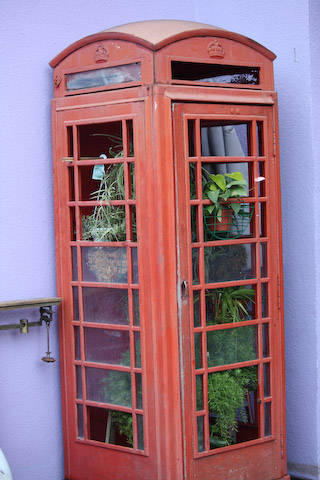 share
share
It’s already got glass walls, so making an old phone box into a miniature greenhouse seems like a logical step. Plus the contrast between the green plants and the red paint is quite eye-catching.
Private calling booths in Google’s London office.
 share
share
Okay, so these phone booths are actually being used for their intended purpose, but rather than out on the street, they’re inside Google’s London offices, where employees can make calls in private.
A pub entrance in Germany.
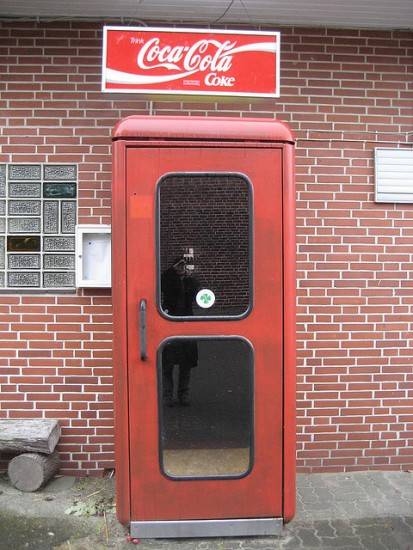 share
share
You won’t be able to make a call, but you’ll probably get some good beer. This phone booth in Germany has been recycled into a pub entranceway.
The tiniest art gallery.
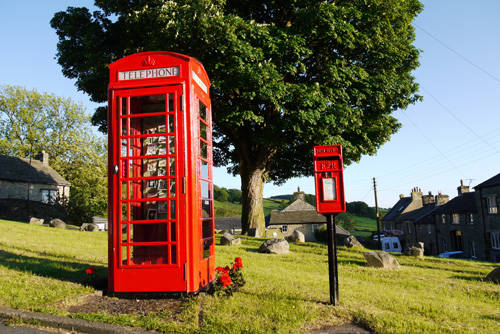 share
share
The
Gallery on the Green in Settle, England was adopted as part of BT’s Adopt a Kiosk plan, and converted into a fully functional community art gallery. It’s open 24/7 and the exhibits are constantly changing. Artists from all over the world, as well as plenty of local artists, have shown their work here.
One chilly phone.
 share
share
This phone booth is sculpted from ice, and while it’s still a phone booth, it also serves as an attraction.
An installation about homelessness.
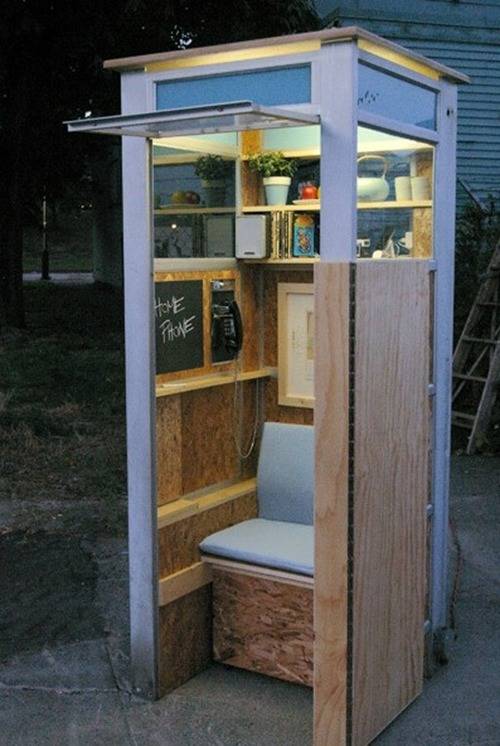 share
share
Contexture Design, made up of designers Nathan Lee and Trevor Coghill, created this “Home Phone” as a way of communicating to the public about shelter and connectedness, in particular how phone booths provided both for homeless populations. With the removal of phone booths, many homeless people lost not only temporary shelter, but a way to connect with others.
A loo.
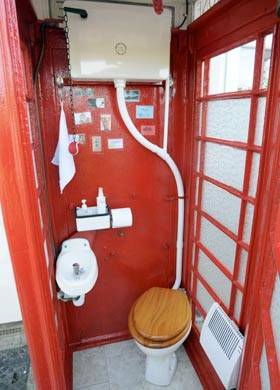 share
share
73-year-old John Long found this phone box in a reclamation yard and, well, reclaimed it. He spent several months converting the phone box into a working lavatory. It features a toilet, sink, cistern and even a red tennis ball on the toilet’s pull-chain. And yes, he replaced the glass with frosted panes for privacy.
A couch.
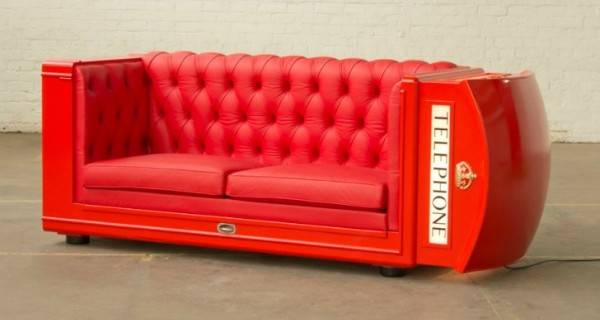 share
share
While most people chose to keep the phone booths vertical, these people turned it sideways to create a kitschy couch.
A place to get cash in a pinch.
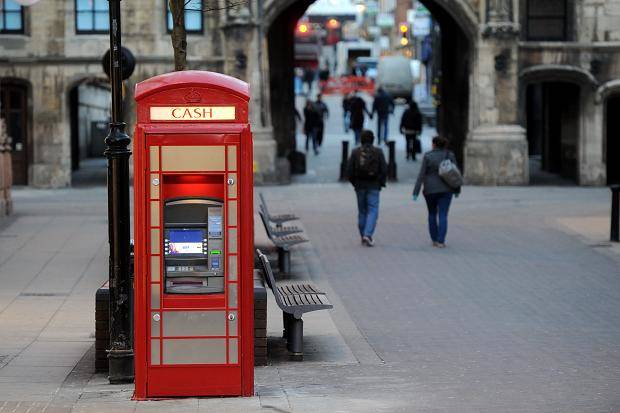 share
share
While people might need phones in public less than they once did, cash is something people still need, and so this phone box returned to public service, this time as a cash machine. Some people felt that the cash machine itself should have been recessed, feeling exposed in the open, but with a few tweaks, this might catch on.
A place to smoke your meats.
 share
share
Chef Jamie Oliver converted this phone box into a hot and cold smoker. Because it’s what every home needs.
Public phones as public art.
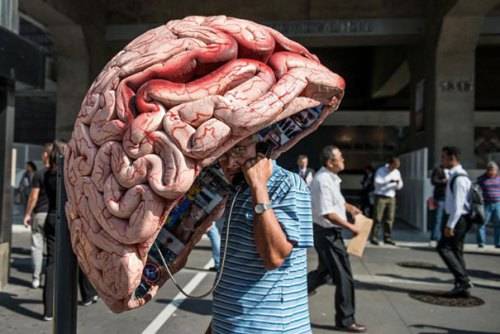 share
share
2012 saw the kickoff of Call Parade, a continuous public art project in São Paulo, where telecommunications company Vivo granted 100 artists a public phone each and let them go crazy. The results were some inventive transformations of the hood-shaped public phones. The phones featured paintings and sculptures on the inside and outside surfaces.
The tiniest bar.
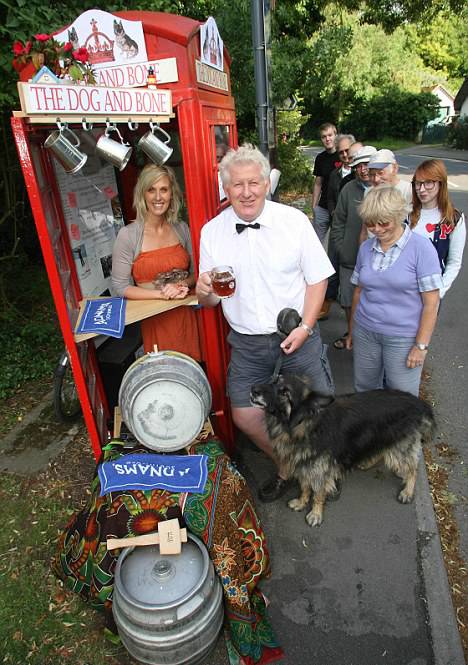 share
share
The Dog and Bone Alehouse has the distinction of being the world’s smallest pub, located inside a phone box. After losing their (regular-sized) pub, The Plough, Alistair Janson and his friends used this phone box to serve up brews at a village fair. It was also used to raise awareness and allow people to support the reopening of The Plough.
A slightly ominous-looking outdoor shower
 share
share
This phone booth looks pretty out of place on a dock on Leverick Bay in the Virgin Islands, but it’s in just the right spot if you need to freshen up quickly: it’s been converted into an outdoor shower.
Shark phone.
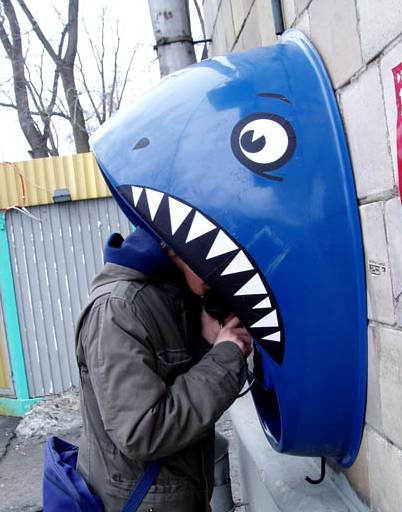 share
share
Public phones in Russia are this deep blue color, so street artist Renald, from Petrozavodsk, turned them into sharks with the help of spray paint and some stencils. They were a hit with residents and the press, but the phone company wasn’t so amused, and painted over the designs.
Semi-functional changing rooms.
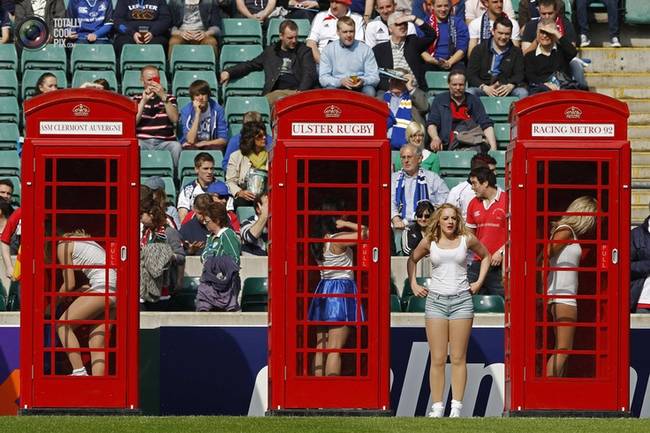 share
share
These phone booths serve as changing booths for cheerleaders between routines at the Heineken Cup’s final rugby match at Twickenham Stadium in London. They might have wanted to invest in some frosted glass at the very least, as the transparent doors kind of defeat the purpose of a changing room.
The disappearance of the typical phone booth might make you feel nostalgic, but the next time your car breaks down several miles from anywhere, you’ll be thankful for your cell phone. As technology evolves, we can create new things out of the obsolete–after all, it’s better to reuse and reinvent than to let things go to waste.
 share
share
 share
share
 share
share
 share
share
 share
share
 share
share
 share
share
 share
share
 share
share
 share
share
 share
share
 share
share
 share
share
 share
share
 share
share



